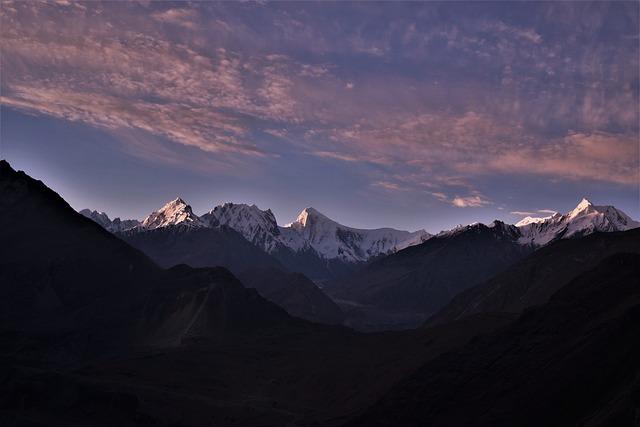Navigating Truth: The Evolving Landscape of Pakistan’s Media
In a world increasingly defined by information saturation, the media plays a pivotal role in shaping public discourse and understanding. Nowhere is this more pertinent than in Pakistan, a nation marked by its vibrant cultural tapestry and tumultuous political landscape. As digital platforms rise and traditional outlets grapple with shifting paradigms, the evolution of media in Pakistan presents a compelling narrative of resilience, conflict, and adaptation. From the bold voices championing press freedom to the subtler undercurrents of censorship and misinformation, the quest for truth in this dynamic environment is fraught with challenges. This article delves into the contours of Pakistan’s media landscape, exploring how it navigates the intricacies of credibility, accountability, and the quest for an informed citizenry amidst the pulse of a rapidly changing society. As we journey through the myriad influences—both external and internal—that shape this vibrant medium, we uncover the complexities of broadcasting truth in a nation where every headline carries the weight of history and hope.
Evolving Dynamics of Media Freedom in Pakistan
The landscape of media freedom in Pakistan has been marked by a complex interplay of journalistic integrity and governmental pressure. Historically, the press has oscillated between periods of relative freedom and phases characterized by heavy censorship. In recent years, the growth of digital media platforms has transformed the way information is disseminated, providing a new avenue for alternative voices. Social media, in particular, has emerged as a double-edged sword; while it empowers citizens to share their narratives, it also exposes them to state surveillance and reprisals. This dynamic environment has forced journalists to continuously adapt their strategies, balancing the need for authentic reporting with the risks of facing backlash from various power centers.
In light of this evolving scenario, an examination of the key players in media governance reveals a tapestry of motivations and constraints. The following table summarizes the primary influences affecting media freedom in Pakistan:
| Influence Type | Description |
|---|---|
| Government Regulations | Implementation of laws that restrict media reporting, particularly on sensitive issues. |
| Corporate Interests | Media houses often align with political and economic interests, affecting editorial independence. |
| Social Media Influence | Platforms allow for grassroots movements but can also lead to misinformation. |
| Public Demand | Rise in public demand for transparency has encouraged some media outlets to challenge censorship. |

Challenges of Misinformation and Public Discourse
The digital age has transformed the way people access information, but it has also paved the way for rampant misinformation. In Pakistan, where social media platforms have become the primary source of news for many, the challenge lies in distinguishing between credible journalism and fabricated narratives. This ambiguous environment fosters polarization within public discourse, leading to a dangerously fragmented society. The spread of false information can have serious repercussions, including fueling social tensions, misinforming voters during elections, and creating a mistrust that undermines democratic processes.
The impact of misinformation can be further illustrated through several key factors:
| Factor | Impact |
|---|---|
| Social Media Algorithms | Amplify sensationalist content |
| Echo Chambers | Reinforce existing beliefs |
| Lack of Media Literacy | Increased susceptibility to falsehoods |
| Political Propaganda | Manipulate public opinion |
Addressing these challenges requires a concerted effort from various stakeholders, including media organizations, educational institutions, and the government. Promoting media literacy programs, fostering transparent journalism, and encouraging critical thinking among citizens are essential steps toward cultivating a more informed society. As the landscape of Pakistan’s media continues to evolve, so too must the collective commitment to uphold truth and integrity in public discourse.

Embracing Digital Transformation for Responsible Journalism
The rapid evolution of technology has reshaped the media landscape, offering new tools and platforms for information dissemination while challenging traditional journalistic practices. Digital transformation empowers journalists to harness data, drive engagement, and enhance storytelling. Key strategies for integrating technology into journalism in Pakistan include:
- Data-Driven Reporting: Utilizing analytics to inform news coverage and audience interests.
- Interactive Content: Engaging audiences through multimedia formats such as videos, infographics, and podcasts.
- Social Media Engagement: Cultivating community interactions and feedback on various platforms.
However, with these advancements come significant responsibilities. The challenge lies in maintaining ethical standards and ensuring the credibility of the information presented. Journalists must prioritize the following principles to embrace digital transformation responsibly:
- Fact-Checking Protocols: Implementing stringent verification methods to avoid misinformation.
- Transparency Practices: Being open about sources and methodologies to build trust with audiences.
- Accountability Mechanisms: Establishing clear processes for addressing errors and criticisms.

Strengthening Media Literacy: Empowering the Audience
In an age where information is at our fingertips, equipping individuals with the ability to discern credible sources from misinformation is paramount. Media literacy goes beyond mere consumption; it fosters critical thinking skills that enable audiences to question and analyze the narratives presented to them. To achieve this, educational initiatives should include the following key elements:
- Understanding Bias: Recognizing the inherent biases in news coverage helps audiences appreciate diverse viewpoints.
- Fact-Checking Skills: Encouraging the use of fact-checking websites empowers individuals to validate the authenticity of information.
- Media Production Skills: Teaching how to create and disseminate content not only demystifies media but also promotes responsible sharing.
- Engagement with Community Media: Connecting with local news sources fosters a sense of accountability and relevance in reporting.
Moreover, introducing structured programs in schools and community centers can solidify these skills. For instance, workshops could incorporate interactive sessions that simulate news creation and analysis, providing participants hands-on experience. A potential framework for such initiatives might involve:
| Workshop Topic | Objectives | Duration |
|---|---|---|
| Identifying Fake News | Developing analytical skills to distinguish truth from falsehood | 2 hours |
| Creating Responsible Content | Understanding ethical principles in journalism | 3 hours |
| Engaging with Media | Exploring the role of media in democracy and civic engagement | 1 hour |
Closing Remarks
As we traverse the winding paths of Pakistan’s media landscape, it becomes clear that truth is not a static monument but a dynamic river, flowing and reshaping itself with each passing current of political, social, and technological change. The challenges faced by journalists and media houses reflect a broader struggle for transparency and accountability in society. While the obstacles are significant, so too are the opportunities that lie ahead for a more informed and engaged citizenry.
In this delicate dance between information and influence, the media stands at a crucial juncture, armed with the power to enlighten and empower. As consumers of news, we are called to remain vigilant, discerning, and supportive of a media ecosystem that thrives on integrity and diverse voices.
The journey toward navigating truth is ongoing, and as Pakistan’s media continues to evolve, so too must our understanding of it. Let us hope that through resilience, innovation, and a commitment to ethical journalism, the media will serve not just as a mirror reflecting reality but as a catalyst for positive change in society. The story of Pakistan’s media is still being written; may we all play a role in shaping its narrative.



